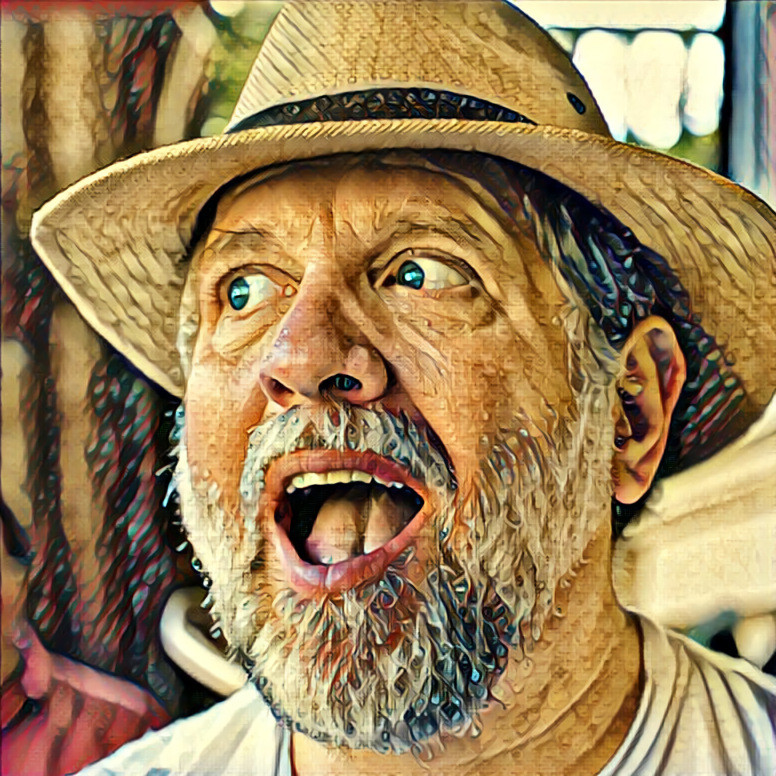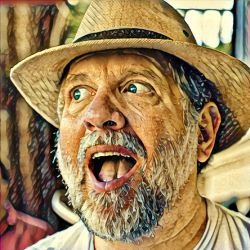Home > Topics > Post Processing > Capture One > Lr and C1
Lr and C1
Tagged: Capture One
-
AuthorTopic: Lr and C1 Read 27600 Times
-
Capture Oneon: September 26, 2019 at 4:56 pm
Hi There: I still have and use Lr 6.14 and am learning C1 12. Personally I find the DAM aspects of Lr better, at least for now, but with the A7R III files I prefer the processing in C1. My current workflow is to dump everything off the camera into Lr, sort out the dross and import the rest into C1. Yesterday I was out on a shoot and made a number of bracketed exposures. Brought everything into Lr, and used the built-in tools to created HDR images from the brackets. Also made a couple of quick panos. I don’t think Lr is necessarily the best tool for either of these, but in this case they looked fine to me. Lr renders both the HDR merges and the panos as .dng files. Today I was going through the images in C1 and kept thinking there were images missing… I finally figured out that C1 imported the pano renders, but none of the HDR merges. I even tried creating a collection in Lr of the 10 HDR merges, exporting that collection as a catalog and importing that into C1, but it just said the images were incompatible. Fortunately I still have the original raw files.
Just an FYI.
Mike.
_____
Mike Nelson Pedde
Victoria, BC
https://www.wolfnowl.com/Re: Lr and C1Reply #1 on: September 26, 2019 at 9:23 pmMike, C1 will work with all JPEG and Tiff files. Once your panos are finished in LR make sure to export them as TIFF or JPEG and then import those into c1.
Kevin Raber
Owner and Publisher of photoPXLRe: Lr and C1Reply #2 on: September 27, 2019 at 1:26 pmThanks, Kevin. As I mentioned, I have other tools for doing both HDR and panoramas; what surprised me was that C1 had no problems importing Panorama.dng but the HDR.dng files were incompatible. Go figure. Not a criticism of either program, just a head scratcher. In this case I did export/import .tif files. ?
Mike.
_____
Mike Nelson Pedde
Victoria, BC
https://www.wolfnowl.com/Re: Lr and C1Reply #3 on: September 29, 2019 at 1:18 amC1 (Phase One) doesn’t really fully support DNG…in fact the support is very limited to only those cameras C1 already supports (as far as I understand). To be fair, There are very few 3rd party apps that can read or write linear DNG files…DxO can write DNG files but I’m not sure DxO can read and process an ACR/LR created linear DNG because while the file has not he demosaiced, the white balance hasn’t been done.
-
This reply was modified 4 years, 10 months ago by
Christopher Sanderson. Reason: “DNS” = DNG?
Re: Lr and C1Reply #4 on: September 29, 2019 at 3:40 amThanks for the explanation!
Mike.
_____
Mike Nelson Pedde
Victoria, BC
https://www.wolfnowl.com/Re: Lr and C1Reply #5 on: October 25, 2019 at 7:08 pmC1 (Phase One) doesn’t really fully support DNG…
I’m very impressed with the videos on Capture One that Kevin has provided. I’m starting to have concerns about Adobe – I think Lr CC is a disaster. The videos are compelling enough to make me seriously consider dumping the Adobe CC Photographer $10/month plan.
However, I’ve converted most of my RAW files to DNG, so not fully supporting DNG is a problem. DNG converted files contain linearized raw data in a 16 bit fixed point format. From the comments, it appears that C1 works fine with those file. However, …
The likely reason that C1 doesn’t recognize the HDR-DNG files is that those files store data in a 16 bit floating point format. Those files can have a 30 stop dynamic range. I personally believe that the HDR-DNG approach is one of the two “right” ways to do HDR merging of multiple exposures. The other “right” way is just layers in photoshop. HDR tone mapping is nothing but ordinary post processing – with lots of shadow pushing. Give me Lr HDR merge, and let me do the tone mapping! By the way, you can HDR merge images of the same exposure in order to reduce noise.
By the way, it doesn’t have to be a DNG. The TIFF standard supports floating point data formats. Almost all image files (proprietary RAW, DNG, JPEG, …) are based on the TIFF standard. So, floating point format is not an Adobe thing.
So this is a problem for C1. It should do an HDR merge, and it should be able to work with floating point data as in HDR-DNG or otherwise.
JSS
Re: Lr and C1Reply #6 on: October 26, 2019 at 11:10 amPhase One has announced the Capture One 20 beta program. There is a claim they handle DNG files better. You may want to sign up for the beta program and see if the issues are solved.
Frankly, I wouldn’t convert to DNG unless I’m years into my workflow. Many RAW files contain references to sensor information like dead pixels or columns etc. That’s not always converted over in DNG.
Most RAW formats will be supported for a long time. DNG was originally designed to be an archival format in case a camera manufacturer went out of business or a RAW processor couldn’t read certain older files. Converting to DNG is an extra step in a workflow that may not offer any benefit.
Kevin Raber
Owner and Publisher of photoPXLRe: Lr and C1Reply #7 on: October 28, 2019 at 10:10 amFrankly, I wouldn’t convert to DNG unless I’m years into my workflow. Many RAW files contain references to sensor information like dead pixels or columns etc. That’s not always converted over in DNG. Most RAW formats will be supported for a long time. DNG was originally designed to be an archival format in case a camera manufacturer went out of business or a RAW processor couldn’t read certain older files. Converting to DNG is an extra step in a workflow that may not offer any benefit.
Kevin, with substantial due respect, I think you missed a key point here. I apologize in advance for my rant here.
First, there is no real reason for camera manufacturers not to adopt DNG. If there is nothing a proprietary RAW file that DNG can’t do. DNG has two ways to support damaged pixels, for example. The only processing of data that is done in conversion to DNG is linearization and black level subtraction. (There is not demosaicing, etc.) Those things are corrections for camera imperfection, as calibrated at manufacture time. They are future proof, so there is no reason not to do that once for archival storage. That’s the whole concept of the “digital negative.” On the other hand, there is a huge advantage to having one common RAW format.
In my opinion, and one can certainly disagree with my rant, the main reason of proprietary RAW files is that it is one of the tools the industry uses to shut down 3rd party software development. The other is that they don’t publish APIs (Application Programming Interfaces).
They want to keep you in their “ecosystem.” Software manufacturers must pay a royalty and sign a non-disclosure agreement in order to get details of RAW format specification. That makes it next to impossible for the rather large freelance and small company software developer community to develop new apps. (Check out the audience size at Apple’s WWDC.) Almost all camera companies have their own post processing software, but have you ever seen a positive review of, say, Sony’s Imaging Edge, or Nikon’s Capture software? C1 is the exception. It was originally developed for Phase One cameras – and then expanded to support other formats. But seriously, how does Imaging Edge stack up to C1? I don’t see too many sites like PhotoPxl doing videos on Imaging Edge. If the industry would adopt DNG for raw capture, and again there is no reason not to, like some enlightened companies (Leica, Pentax) have, then anybody’s software would run on any camera’s RAW files. No, we can’t have that! Proprietary RAW files are nothing more than a log they throw in road of progress.
Compare that to the Apple and Android model – which is to make all the APIs open and well supported, and turn the developer community loose to develop apps. It is next to impossible to do this in digital photography, and photographers suffer because of it.
The other part of this story is that camera manufacturers generally don’t support open APIs for WiFi, BT or even USB. If we had access to those APIs, the software developer community could do some really cool stuff. We just need to set them loose. For example, why can’t we do focus stacks on the later Sony cameras (other than using tethered – yuk – Imaging Edge)? It could be done easily with an iPhone app. In fact, Sony used to publish their WiFi APIs, but they stopped doing that a few years ago. Why? – to protect their in house software? – which … – well this is probably a good place to end my rant.
JSS
Re: Lr and C1Reply #8 on: October 28, 2019 at 7:34 pmYou are welcome to rant John. What I am going to do is arrange for hopefully an interview with some folks that are really deeply involved in this whole RAW thing. As an FYI in case you din;t know it I was VP at PHase One for 13 years. I was involved in this discussion many times. I also have some very deep connections into Adobe, and will be having coincidentally a conversation with one of their top management tomorrow. I think it is important that everyone knows the ins and outs of this and maybe right from the source. I am not claiming what you are saying is wrong in any way but there is a story here.
I will also be traveling with Jeff Schewe for the next 12 days and I will bring him into the discussion. Maybe I can do a video with him while traveling. This is not to start any kind of argument but is to make sure we here the right info from the people that actually had things to do with creating the DNG format.
Kevin Raber
Owner and Publisher of photoPXLRe: Lr and C1Reply #9 on: October 29, 2019 at 3:58 amMaybe I can do a video with him while traveling.
It would be good if you could arrange that as Jeff Schewe has had, in the past, some educational observations / tips on image processing that I have found very useful.
Re: Lr and C1Reply #10 on: October 29, 2019 at 6:41 pmI have forgotten about DNG a long time ago for one main reason: You can convert a RAW to DNG but not the opposite. Maybe things have changed since then.
If you have a look at how the RAW processors have evolved in a few years and have ever redevelop images processed with, lets say, LR 3, you´ll get amazed at the difference. That´s why I think it´s better to keep the original RAW´s instead of the DNG just in case DNG stops working in a future. Those things happen.
I keep a LR 6 version so that if I need it I can convert to TIFF or any other format (DNG included) if by any mean that camera model is not supported anymore.
On the main topic, my opinion is that I would like to have a pro tool complete, so that I don´t have to be jumping back and forth from one software to others to finish my work. And, for me, it means having a good DAM included where I can have 400.000 + images without having to be switching from one catalog to other and not being able to do a thorough search into all of them at once.
Of course (for me) it has to be a stand alone versión so that I always have the developed pictures with the correct software to read them as I processed them. Maybe for a non important photographer as me it´s not a big problem, but imagine we couldn´t read today Ansel Adam´s or any other master photographys.
I can´t avoid thinking that, for instance, all the pictures that not so long ago appeared in a flea market shot by Robert Capa ( not really sure if it was him) would have finished in a trash if they where into a HD that nowadays computers couldn´t read and even if it could be possible none would bother to read it because normally there will be nothing inside.
Re: Lr and C1Reply #11 on: October 29, 2019 at 10:01 pmI have forgotten about DNG a long time ago for one main reason: You can convert a RAW to DNG but not the opposite. Maybe things have changed since then.
In Lr Preferences under the File Handling tab, there is a check box “Embed Original RAW File”. So, you actually can go back to your RAW format from DNG. I don’t recommend that, because I don’t believe anything is lost by DNG conversion. You would be right to point out that it is silly to double your storage in that way. I’m not concerned about DNG going away because it is an open standard. Even if Adobe goes under, someone will open that standard document and write software for it. You can’t say that for proprietary file formats because they are not open standards. My point is that we are always better off with an open standard.
JSS
-
This reply was modified 4 years, 9 months ago by
 John Sadowsky.
John Sadowsky.
-
This reply was modified 4 years, 10 months ago by
-
AuthorPosts
- You must be logged in to reply to this topic.




